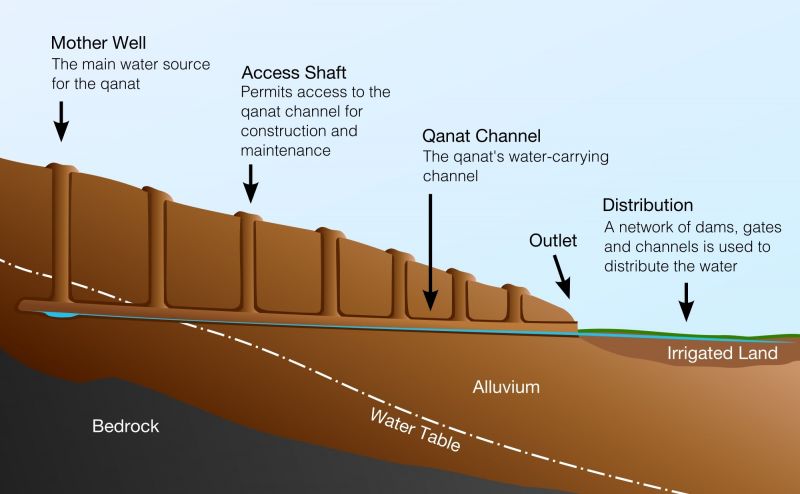The Ancient Water Tunnels Below Iran's Desert
Published on by Water Network Research, Official research team of The Water Network in Technology
Beneath the dusty desert lies an ancient water system that's still in use - qanat. 
Image: Wikipedia
From above, it seems as though a series of holes were pierced in the desert’s dry surface. But a hundred feet below the mysterious pits, a narrow tunnel carries water from a distant aquifer to farms and villages that wouldn’t exist without it.
These underground aqueducts, called qanats, are 3,000-year-old marvels of engineering, many of which are still in use throughout Iran. Beginning in the Iron Age, surveyors—having found an elevated source of water, usually at the head of a former river valley or even in a cave lake—would cut long, sloping tunnels from the water source to where it was needed.
The orderly holes still visible aboveground are air shafts, bored to release dust and provide oxygen to the workers who dug the qanats by hand, sometimes as far as forty miles. The tunnels eventually open at ground level to form vivid oases. (Watch: the secret history of saffron, the world's priciest spice.)
Constructing qanats was a painstaking task, made even more so by the need for great precision. The angle of the tunnel’s slope had to be steep enough to allow the water to flow freely without stagnating—but too steep and the water would flow with enough force to speed erosion and collapse the tunnel.
Although difficult work—even after completion, qanats require yearly maintenance—the irrigation tunnels allowed agriculture to bloom in the arid desert. The technology spread, through Silk Road trade and Muslim conquest, and qanats can be found as far as Morocco and Spain.
Read more: National Geographic
Watch the NG's short movie about qanats
Media
Taxonomy
- Irrigation
- Water Access
- Water Supply
- Water Supply
- Spring Water Supply
- Infrastructure
- Integrated Infrastructure
- Infrastructure Management
- Irrigation Management